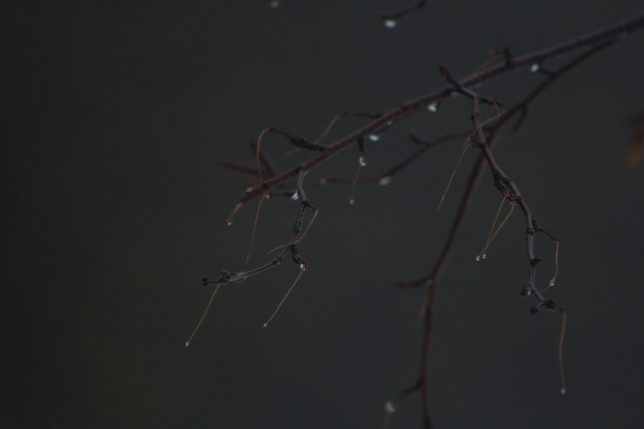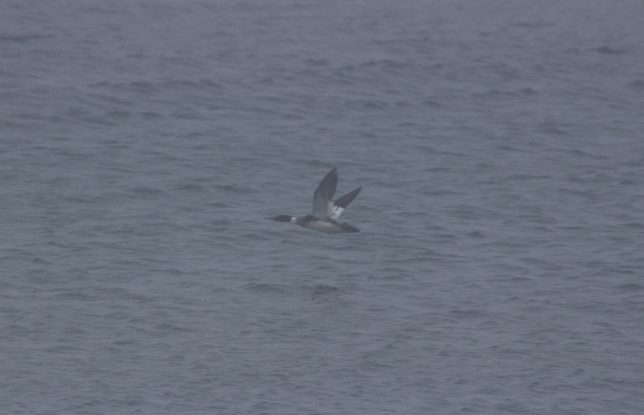
4/9: Decent day. Fog continuing in the morning, but it lifted for a couple brief periods and activity picked up. Aythya ducks were on the move, with several flocks of greater scaup and redhead flying both East and West, as well as some more distant unidentified flocks. Some flocks of white-winged scoters and a couple mallard and wood duck pairs were also moving, plus the usual array of mergs and goldeneyes. Passerines were present in large numbers, with several dozen red-wings, robins, grackles, and redpolls seen overhead (plus two snow buntings), but none were making the trip North.
eBird list: https://ebird.org/view/checklist/S54762534
Fog had cleared by evening, but the rising wind had driven a large ice sheet into the channel, and movements were basically nonexistent, aside from some far-distant (>5 mi) Aythya and merganser flocks.
eBird list: https://ebird.org/view/checklist/S54817914

4/10: A bitter but productive morning! Passerines were abundant and moving strongly Northward in the first two hours, with 5 flickers, 138 robins, 9 starlings, 30 red-wings, 20 grackles, 27 redpolls, and 6 meadowlarks (FOY for the point!) heading across the straits. Most seemed to be towering as high as they could before making the journey, though the flickers and meadowlarks were more direct, and burst straight from the trees towards the opposite shore. Crows and ravens were also moving North (though some crows were coming South as well), and an even more diverse assortment of songbirds was present in and above the near-shore trees, with three bluebirds, a golden-crowned kinglet, a junco, and a song sparrow heard near in flight, six more meadowlarks perched in an aspen (one singing), and a pair of Eastern phoebe (FOY) seen near the end of my watch (one singing).
Waterbird diversity was down, as a large mass of ice chunks covered about 90% of the near waters for most of my time, only starting to break up and reveal a wider channel near the UP by mid-morning as the sun loosened the blocks.Notable highlights were a flock of 8 white-winged scoters, four sandhill cranes, and 14 double-crested cormorants (FOY), flying in from the East to land near St. Helena Island (with some departing back towards the UP).
Right near the end of the morning, a steady stream of raptors was picking up, with a turkey vulture, 12 red-tails, and a peregrine falcon (FOY) making the trip across, as well as a local merlin and three local bald eagles. Seen early as well was the local coyote, which this time trotted right past me—maybe 15 feet away, without noticing I was there!
eBird list: https://ebird.org/view/checklist/S54803847

Evening was very quiet, with only a few Aythya flocks moving right at the start of the count. The mass of ice chunks now filled 90% of the straits, and covered the water’s surface for about a 2-3 mile radius out from the McGulpin shoreline. Heat shimmer and increasing haze/fog made for difficult viewing beyond the ice edge, but I counted through a milling group of 173 red-breasted mergansers—the high count on the season so far!
eBird list: https://ebird.org/view/checklist/S54817201
